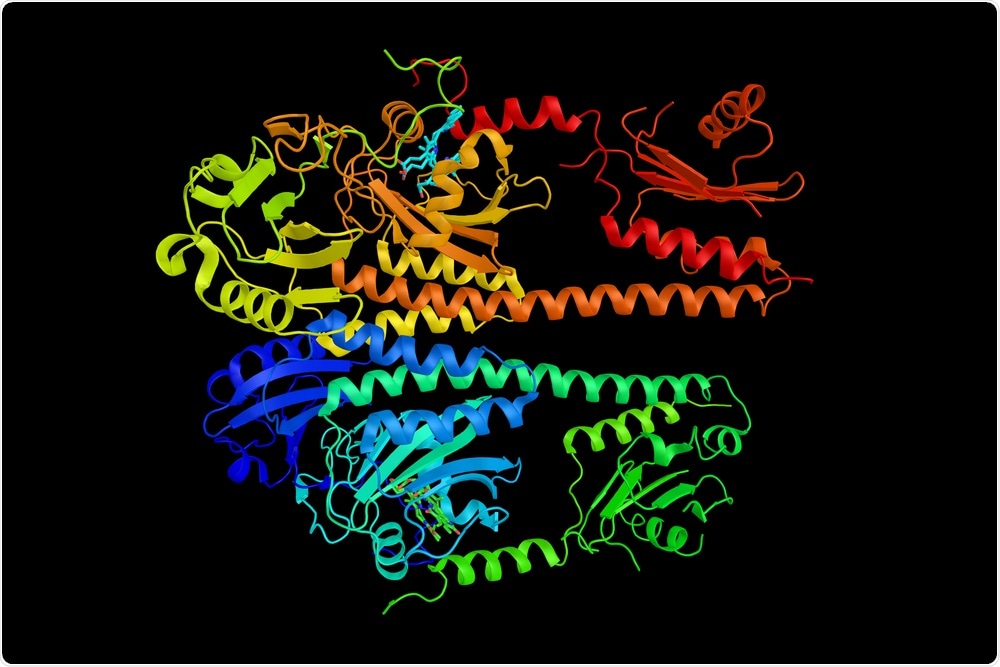Phytochrome B, a protein that can sense light and temperature, activates plant growth and regulates the flowering time, but the mechanism by which it performs these functions is not fully understood.

Image Credit: ibreakstock/Shutterstock.com
In a study reported recently in Nature Communications, led by Meng Chen, a professor of botany and plant sciences at the University of California, Riverside, a team of cell biologists showed that the phytochrome B molecule has unpredicted dynamics triggered by temperature, and acts differently based on the temperature and type of light.
With the warming of the world due to climate change, flowering times and growth patterns of crops are bound to change.
A wider knowledge of the mechanism by which phytochromes control the seasonal rhythms of plant growth will help researchers to design crops for optimal growth under the Earth’s new climate and can offer insights into cancer in animals.
Similar to a binary switch regulated by light and temperature, phytochromes tend to switch between active and inactive forms. Under direct sunlight, for example, in open fields, phytochromes turn “on” and absorb far-red light. This active form prevents elongation of the stem, which restricts how tall plants in direct sunlight can grow.
Under shady regions, phytochromes are less active and absorb red light. This “off” form releases the stem growth inhibition, thus plants grow taller in shady regions to compete with other plants for more sunlight.
In the cells’ interior, light makes “on” phytochromes to merge into units named photobodies within the cell nucleus. When phytochrome B is switched off, it dwells outside the cell nucleus and moves inside when “on,” thus changing the expression of genes and growth patterns.
Variations in light modify the number and size of all foci. Chen’s team has now demonstrated that temperature modifies individual foci.
The researchers studied the behavior of cells exposed to various temperatures and light conditions from the stems and leaves of Arabidopsis thaliana—a plant used as a standard model in botany science. The aim was to observe changes in photobodies as a response to temperature. The present understanding is that phytochromes form photobodies only in the “on” state.
Chen and co-authors Joseph Hahm, Keunhwa Kim, and Yongjian Qiu—members of Chen’s research group at UC Riverside—anticipated that increase in the temperature would have an effect similar to shade—switching “off” the phytochromes. The researchers expected that the photobodies would disappear in shade. The outcomes were completely unexpected.
The team discovered that increasing the temperature did not lead to the disappearance of all the photobodies at once. Rather, specific photobodies disappeared at particular temperature ranges. When the temperature was increased, there was an incremental reduction in the number of photobodies as they disappeared selectively.
We found that a subset of thermostable photobodies can persist even in warm temperatures. The rest of the foci would disappear at each stage of lower temperature. Before we thought all the foci were the same, but now we know they are all different.”
Meng Chen, Professor of Botany and Plant Sciences, University of California, Riverside
The mechanism that made them disappear selectively should be different from the one that made them disappear in shade. This indicates that individual photobodies could act as sensors for particular temperature ranges.
The study also revealed that phytochrome B responds to temperature from two different locations on the molecule. The first part of it sensed the temperature, while the second part forms foci. The foci thus formed do not respond to temperature. This demonstrates that temperature and light are sensed by the same part of the molecule, yet resulting in different behaviors.
Photobodies are large, dynamic protein complexes. Our results suggest that each of them could have a different composition. What we think is that the unique composition of individual photobodies make them react to temperature differently. Future studies on understanding the unique features of each photobody will likely uncover the underlying mechanisms of temperature sensing and the regulation of temperature-responsive gene expression in plants.”
Meng Chen, Professor of Botany and Plant Sciences, University of California, Riverside
Apart from helping the development plants that can survive in a warming world, this study could help researchers study more about cancer in animals. Moreover, proteins in animal cells form foci related to cancer in some way; however, their role in the expression and regulation of genes is not known.
Source:
Journal reference:
Hahm, J., et al. (2020) Increasing ambient temperature progressively disassemble Arabidopsis phytochrome B from individual photobodies with distinct thermostabilities. Nature Communications. doi.org/10.1038/s41467-020-15526-z.